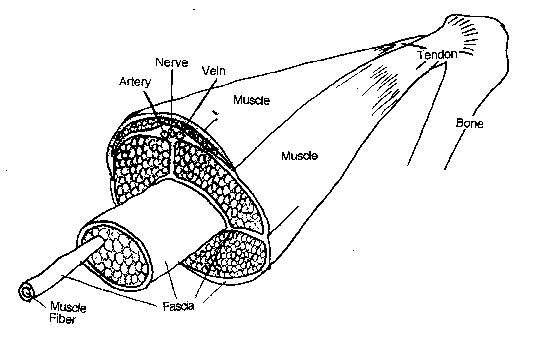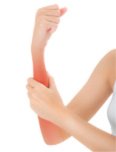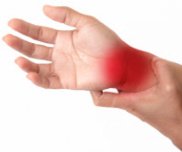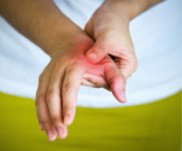Fascia Anatomy
Connective tissue comes in various forms. As we look at the anatomy of fascia, you will see the various forms of this tissue are closely related. Each variety of connective tissue is merely a slightly different chemical makeup from the next form. They are all related and they work in concert with one another.
All forms of connective tissue are made up of the same elements. They include collagen, elastic fibers, and ground fluid.
Fascia is a Form of Connective Tissue

Fascia and tendons are the main types of connective tissue that we are addressing on this website. They are the forms of connective tissue that are most commonly involved in any repetitive strain injury.
In the diagram above, you will see a fictitious rendering of the makeup of a muscle with its attached tendon. Notice how fascia permeates all parts of the muscle, surrounds the blood vessels and nerves, and as the muscle belly narrows near its attachment to bone, the fascia becomes the tendon. In this way, fascia flows through the body, in and out of muscles, around bones and organs, along planes and in thick sheets and very delicate, lace-like, arrangements.
Fascia
Fascia, also known as myofascia, is the most fluid form of connective tissue in its normal state. It has the highest proportion of elastic fibers of all the connective tissues of the body. It also has the highest percentage of ground fluid so it requires the highest level of hydration to remain healthy.
Tendons
Tendons are also made up of collagen, elastic fibers and ground fluid, but the percentage of elastic fibers and ground fluid is much less than in myofascia, giving tendons their strap-like consistency and function. Tendons are actually an extension of the fascia that permeates muscle. It simply loses the elastic fibers and ground fluid as it nears its attachment to bone. Tendons do not stretch much, if at all.
Ligaments
Ligaments are very similar to tendons. They also are made up of mostly collagen with very little elastic fibers and ground fluid. Ligaments attach bone to bone as is seen in the knees and other joints. Ligaments also do not stretch.
Also visit these related pages:
Fascia - What You Don't Know Is Hurting You
Adhesions - The Real Source Of Your Injury
Scar Tissue - Previous Injuries Add To Your Pain
Stretching Fascia - The Ultimate Injury Solution
Click the block below that most closely matches your injury for more information and to find the Toolkit we offer to help you in your recovery.







